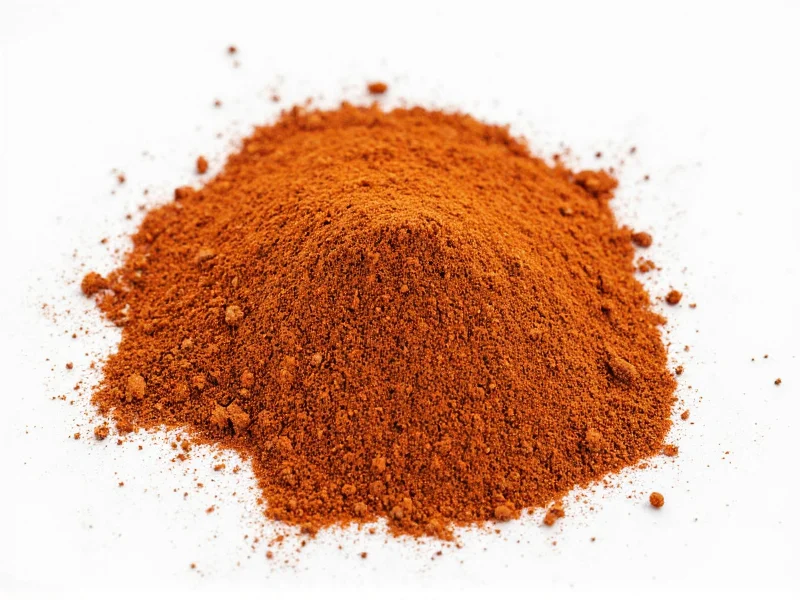Running out of a specific savory spice doesn't mean compromising your dish. Smart substitutions maintain flavor integrity while working with what's available in your pantry. Whether you're missing a specialty ingredient or accommodating dietary restrictions, understanding proper savory spice alternatives keeps your cooking on track without unnecessary trips to the store.
Understanding Savory Spice Substitution Principles
Effective spice substitution requires understanding flavor profiles rather than simple one-to-one replacements. Savory spices fall into categories based on their dominant characteristics: earthy, herbal, pungent, smoky, or umami-rich. Successful substitutions match these primary characteristics while considering:
- Intensity levels - Some spices are significantly stronger than their substitutes
- Flavor notes - Secondary characteristics that affect final taste
- Heat stability - How substitutes behave during cooking
- Texture impact - Particularly important in rubs and finishing spices
Professional chefs typically recommend starting with 75% of the suggested substitute amount, then adjusting to taste. This approach prevents overpowering your dish with unfamiliar flavor profiles.
Comprehensive Savory Spice Substitution Reference
Use this guide for accurate replacements when specific savory spices aren't available. Always consider your specific recipe and adjust quantities based on cooking time and other ingredients.
| Original Spice | Best Substitute | Substitution Ratio | Key Considerations |
|---|---|---|---|
| Cumin | Chili powder (mild) or coriander (earthy) | 1 tsp cumin = 1½ tsp chili powder | Chili powder adds heat; coriander lacks smokiness |
| Smoked Paprika | Chipotle powder + sweet paprika | 1 tsp smoked paprika = ½ tsp chipotle + ½ tsp sweet paprika | Adjust chipotle amount based on desired heat level |
| Tarragon | Marjoram or basil | 1 tbsp fresh tarragon = 1 tsp dried marjoram | Marjoram offers similar anise notes without licorice intensity |
| Herbes de Provence | Oregano + thyme + rosemary | 1 tbsp blend = 1 tsp each dried oregano, thyme, rosemary | Add lavender sparingly for authentic flavor profile |
| Fennel Seeds | Dill seeds or anise seeds | 1 tsp fennel = ¾ tsp dill or ½ tsp anise | Anise is stronger; dill offers similar but milder flavor |
| Saffron | Turmeric + pinch of paprika | 1 pinch saffron = ¼ tsp turmeric + tiny paprika pinch | Provides color but not identical flavor; best for rice dishes |
Specialized Substitution Scenarios
Dietary Restriction Adaptations
For salt-sensitive diets requiring savory flavor without sodium, combine nutritional yeast with onion and garlic powder. This creates umami depth similar to MSG without additives. When substituting for celery salt, use equal parts lemon zest and celery seeds for sodium-free dishes.
Regional Ingredient Challenges
Cooks outside major markets often face unavailable specialty spices. For sumac (common in Middle Eastern cuisine), create a substitute using equal parts lemon zest and dried oregano. This captures both the tartness and earthiness, though it won't perfectly replicate sumac's unique flavor profile.
Fresh vs. Dried Spice Conversions
When substituting fresh herbs for dried (or vice versa), remember the general rule: 1 part dried herb equals 3 parts fresh. However, delicate herbs like cilantro and parsley follow a 1:2 ratio instead. Always add dried spices early in cooking to allow flavors to develop, while fresh herbs work best added near the end.
Advanced Substitution Techniques
Professional kitchens often create custom blends when exact substitutes aren't available. For hard-to-find spices like ajwain or nigella seeds, combine more accessible ingredients:
- Ajwain substitute: Equal parts thyme and caraway seeds with a pinch of oregano
- Nigella seeds: Black sesame seeds with a touch of onion powder
- Epazote: Mexican oregano plus marjoram (2:1 ratio)
When creating spice blends as substitutes, toast whole spices before grinding to maximize flavor extraction. This technique particularly benefits substitutions for complex blends like za'atar or garam masala.
Troubleshooting Common Substitution Problems
Even experienced cooks encounter issues when substituting savory spices. If your dish tastes flat after substitution, add a small amount of acid (lemon juice or vinegar) to brighten flavors. When a substitute makes your dish too spicy, incorporate dairy (yogurt or cream) or sweetness (honey or sugar) to balance heat.
For recipes where the missing spice is central to the dish (like cumin in chili), consider modifying the entire flavor profile rather than direct substitution. A cumin-free chili might successfully pivot toward a white bean chili using oregano and smoked paprika instead.











 浙公网安备
33010002000092号
浙公网安备
33010002000092号 浙B2-20120091-4
浙B2-20120091-4